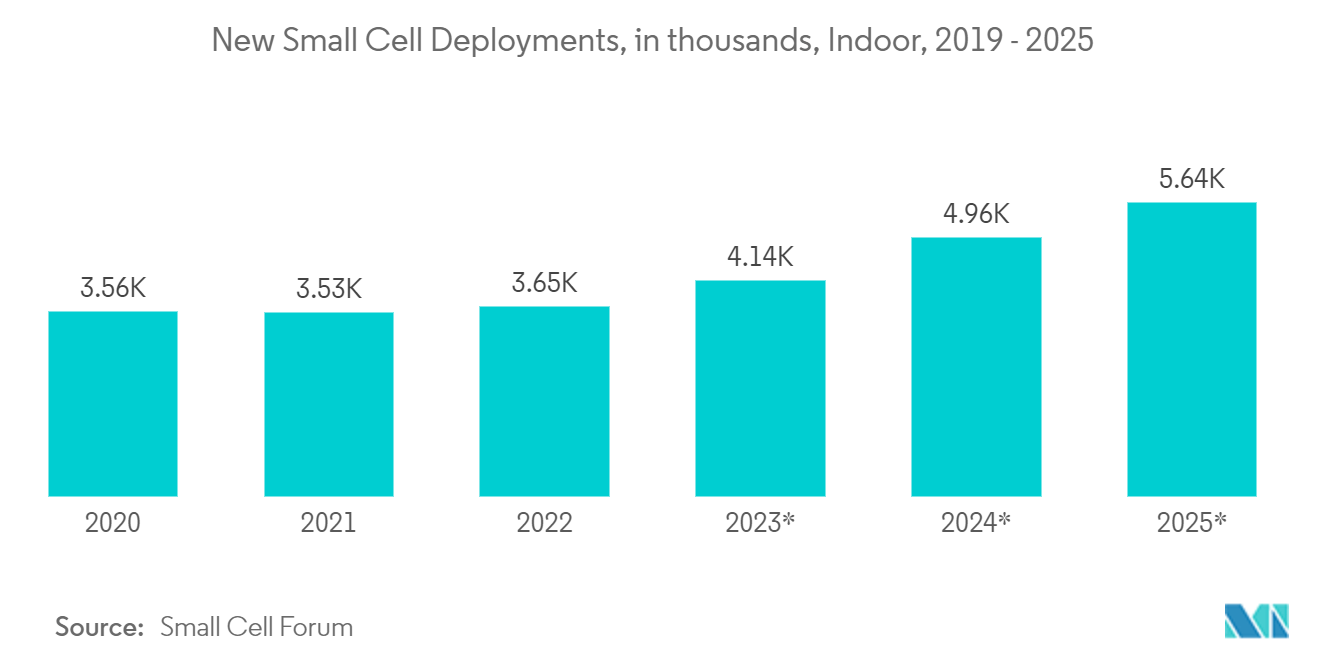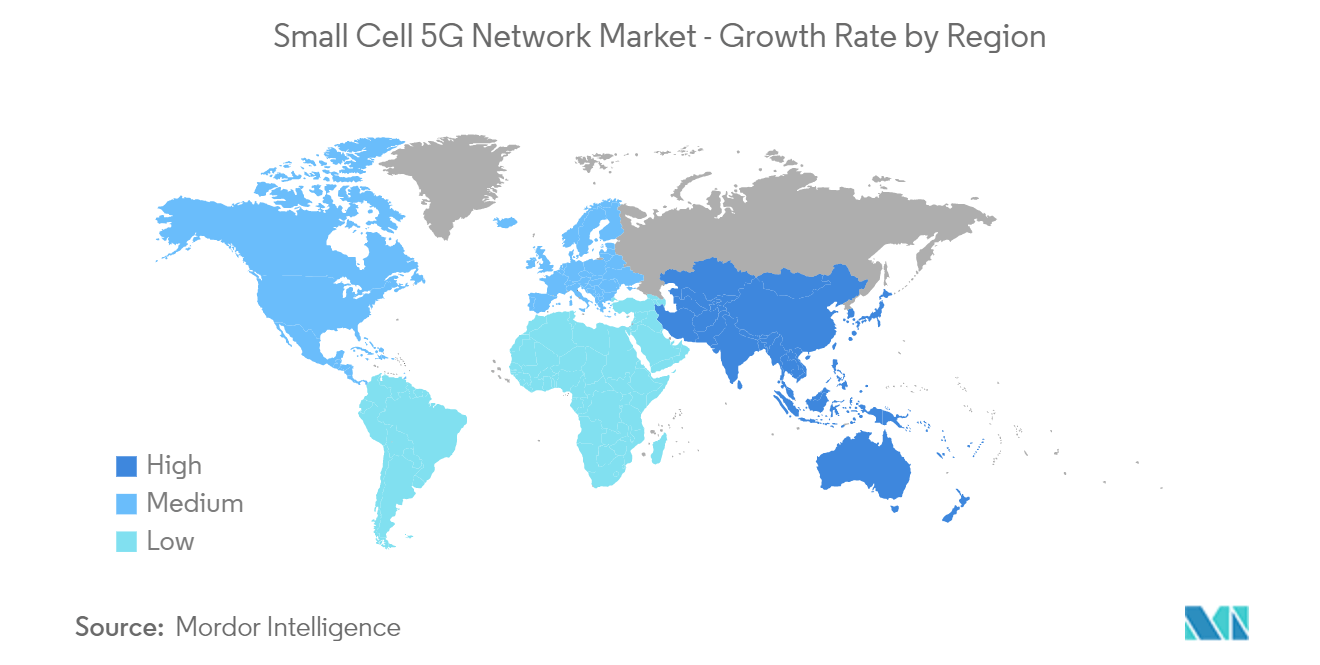Market Trends of Small Cell 5G Network Industry
Telecom Operators Segment is Expected to Grow Significantly
- Small cells are equipped to handle large data rates for mobile broadband and IoT users and dense populations of low-speed and low-power devices, making them ideal for the 5G rollout. This characteristic offers millisecond latencies, a million devices per square mile, and extremely high speeds. As a result, telecom operators worldwide are mainly using small cell technology to bring out 5G technology. According to IoT company Telit, major US telecom companies plan to rely heavily on small cell technology for 5G coverage nationwide.
- To boost the initiative of providing 5G coverage to consumers, Taiwan's largest telecom operator, Chunghwa Telecom (CHT), teamed up with Nokia for products from its small cells portfolio. In Taiwan, CHT was the first operator to roll out 5G non-standalone (NSA) small cells, providing instant 5G coverage in several places, including commercial and tourism locations.
- Nokia will provide CHT with its adaptable AirScale indoor Radio (ASiR) solution and its AirScale micro RRH for outdoor and urban hotspots to improve interior coverage and capacity. In addition to CHT's current base of more than 2,500 sets of 4G small cells, these two solutions will help operators meet the needs of a 5G network's indoor coverage and densification.
- Furthermore, the Small Cell Forum (SCF), a telecoms organization that makes mobile infrastructure solutions available to everyone, issued a PHY API for 5G, which has sparked a competitive ecosystem for suppliers of 5G small cell hardware, software, and equipment. Telecom providers benefit from the competitive ecosystem of the SCF by driving up the demand for the 5G network as the demand for data usage and high-speed data rises.
- For 5G technologies and networks, telecom operators are searching for a fundamentally new pricing model that might rely on interoperability and an open, competitive environment. As networks get decentralized, the front haul between a distributed unit (DU) for radio functions and a centralized unit (CU) for protocol stacks and baseband functions is a crucial interface.

North America is Expected to Hold a Significant Market Share
- North America is considered one of the leading markets due to its widespread use of advanced technology like 5G. In the United States, telecom operators are leveraging tiny cells to densify their 5G network, particularly in metropolitan areas, while reducing costs. Major operators like Sprint, AT&T, Verizon, and T-Mobile have shown a positive approach toward commercializing 5G networks, with billion-dollar agreements made with network equipment manufacturers such as Samsung, Ericsson, Nokia, Huawei, and ZTE to develop their 5G network infrastructure.
- Wireless network operators in the United States are largely embracing tiny cells. CTIA, the trade association, has forecasted that by 2026, there will be more than 800,000 tiny cells in the United States, up from about 86,000 in 2018. After the acquisition of Sprint Corporation by T-Mobile US, they have about 70,000 small cells together. The company plans to pour significant amounts of spectrum onto the biggest and densest wireless network in the United States. However, Verizon's small cell strategy differs from T-Mobile's. It expects mmWave to handle 50% of urban traffic eventually and aims to continue deploying around 14,000 small cells over the next few years to expand the overall coverage.
- According to the Ericsson Mobility Report, by 2024, 5G subscriptions are anticipated to make up 55% of all mobile subscriptions in the North American region. The market is expected to benefit from the increase in 5G subscriptions over the projected period.
- In June 2021, Qualcomm Technologies Inc. launched its second-generation Qualcomm 5G RAN Platform for Small Cells (FSM200xx) in the United States. The platform is designed to expand mobile 5G mmWave coverage and power efficiency, providing data speeds of up to 8 Gbps with bandwidth support of 1 GHz on mmWave, wider 200MHz carrier bandwidth support, and 200 MHz of Sub-6 GHz spectrum aggregation across FDD and TDD, providing data rates of up to 4 Gbps. It also supports technologies like eURLLC to provide low latency and link dependability essential for factory automation and mission-critical control of equipment and machines.
- Ericsson has also collaborated with Rogers Communications Inc., a Canadian communication and media company, to install 5G across its network in Canada. The 5G radio access network (RAN) and 5G core (5GC) for Rogers' 5G network are exclusively supplied by Ericsson, and small cells, conventional and Massive MIMO radios, and MINI-LINK microwave technologies are also part of the technology. The Rogers 5G network is initially using a 2.5 GHz band and will expand to operate on the 600 MHz 5G spectrum as the service expands to other markets.

